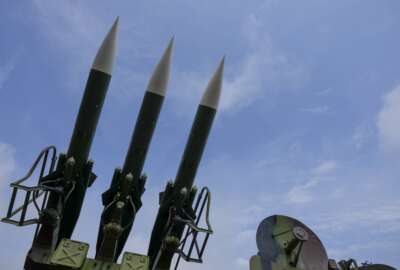James announces 9 steps to a more diverse Air Force
Troubled by a lack of women and minorities at the Air Force's higher levels, its leaders are rolling out nine initiatives focusing on recruitment, promotions and...
Troubled by a lack of women and minorities at the Air Force’s higher levels, its leaders are rolling out nine initiatives focusing on recruitment, promotions and retention. Some are new ideas. Others are existing programs that will be enhanced, Air Force Secretary Deborah Lee James said.
James said the initiatives will help the service keep pace with what she sees as its single biggest threat — the rapid pace of change.
“This is not just about how we look. It’s about our readiness and capabilities today and in the future,” she said during an event on women and leadership in the military, sponsored by the Center for New American Security.
James and Gen. Mark Welsh, the Air Force chief of staff, sent a memo Wednesday to all service members outlining the initiatives. Another memo makes the argument that the service must diversify to retain its military superiority.
Women make up 19 percent of the Air Force. But they are twice as likely as men to cut their military careers short, James noted. Furthermore, she said, both women and people of color are underrepresented in the pilot ranks. She attributed the imbalance to a male-oriented military culture, rigid regulations and laws.
The nine initiatives foreshadow more changes ahead, she said. The Defense Department has directed all services to open combat roles to women. In response, the Air Force plans to set gender-neutral standards for all jobs, including those in the seven career fields now closed to women. The service is “working its ways through the process” and has several other initiatives that are “not quite ready for prime time,” James said.
None will be a silver bullet, she said.
“I expect this will be a journey in all of the military and it will be up to me, and people like me, to keep on it with persistence, focus and leadership,” she said.
Getting into the Air Force
To boost the number of female officer applicants, the service will set a target of 30 percent. Women now make up a quarter of the pool. The Air Force is the only military service to implement such a goal, James said. She expects recruiters and ROTC leaders will have to adjust their strategies and build new partnerships with outside organizations to attract more women.
At the same time, the service will make it easier for shorter people, those under 5-foot-4, to become pilots. Height limits are set according to the size of the most restrictive cockpits, James said, but there are many other planes that shorter people could fly. By making the waiver process more widely accessible to ROTC cadets, James estimated that 900 more women could become pilots over the next five years.
Staying in
Two groups key to an airman’s career have received new instructions to boost the number of women and minorities promoted through the ranks. Career development teams are analyzing barriers, such as the lack of flexibility that causes many women to leave the service when they start families. Promotion boards are considering whether candidates have proven that they can lead in diverse, inclusive environments.
“Those who cannot or choose not to understand that point aren’t going to thrive in our Air Force as much as those who do,” she said, while acknowledging that laws and regulations limit what promotion boards can do.
In addition, the Air Force will defer deployment for new mothers for the first year after giving birth, James said. The current standard is six months, although commanders can make exceptions on a case-by-case basis. A new career intermission program, copied from the Navy, will slowly expand as well. It is aimed at parents or other service members who need extended time at home. The program lets them transfer to the Individual Ready Reserves for up to three years without losing seniority.
Finally, the service will identify and encourage enlisted members to apply for officer training school.
The last initiative focuses on civilian employees of the Air Force. It plans to use hiring panels to evaluate candidates for mid- and senior- level civilian positions. The panels then will recommend a candidate to the hiring manager. The idea has had success in the private sector, James said.
On sexual assault, “We’re doing better but not well enough.”
The military’s inability to wipe out sexual assaults has been a persistent thorn as it tries to diversify its ranks. In recent years, the Air Force has been at the center of the problem. Dozens of female students have reported being assaulted by male instructors at its training center at Lackland Air Force Base in Texas .
Since then, James said, the Air Force has made some — but not enough — progress. Studies by the Defense Department and RAND, the think tank, show the prevalence of sexual assaults in the service has declined even though the number of incidents reported has increased. That shows more victims feel comfortable admitting they’ve been assaulted, she said.
James has spoken privately with sexual assault response coordinators at 60 bases, she said.
“They tell me it’s like night and day in terms of the focus this [issue] receives,” she said.
Yet nearly two-thirds of reported victims throughout the military said they’ve experienced retaliation because they came forward. In the Air Force, it’s usually peers, not supervisors, retaliating against a victim, James said. The service will increase training to focus on the problem, she said.
RELATED STORIES:
Army opens grueling Ranger jobs to women
Fewer reported sex assaults at military academies
Col. Deborah McDonald, Director of Admissions, West Point Military Academy
Copyright © 2025 Federal News Network. All rights reserved. This website is not intended for users located within the European Economic Area.






